Garden plants that look like rosemary can add an air of sophistication to any outdoor or indoor space. Whether you’re growing a small herb garden on your patio or adding accents to your landscaping, these plants are sure to make a statement. Rosemary is an evergreen shrub that has been used for centuries as both a culinary herb and ornamental plant. In this article, we’ll discuss the different varieties of garden plants that look like rosemary, as well as tips for caring for these beauties and ways to use them in your landscape.
Anthemis Cotula
The first of our garden plants that look like rosemary is Anthemis Cotula, also known as “Mayweed” or “Stinking Chamomile.” This plant is native to the Mediterranean region and grows in small clumps with bright yellow flowers that last from late spring into early summer.
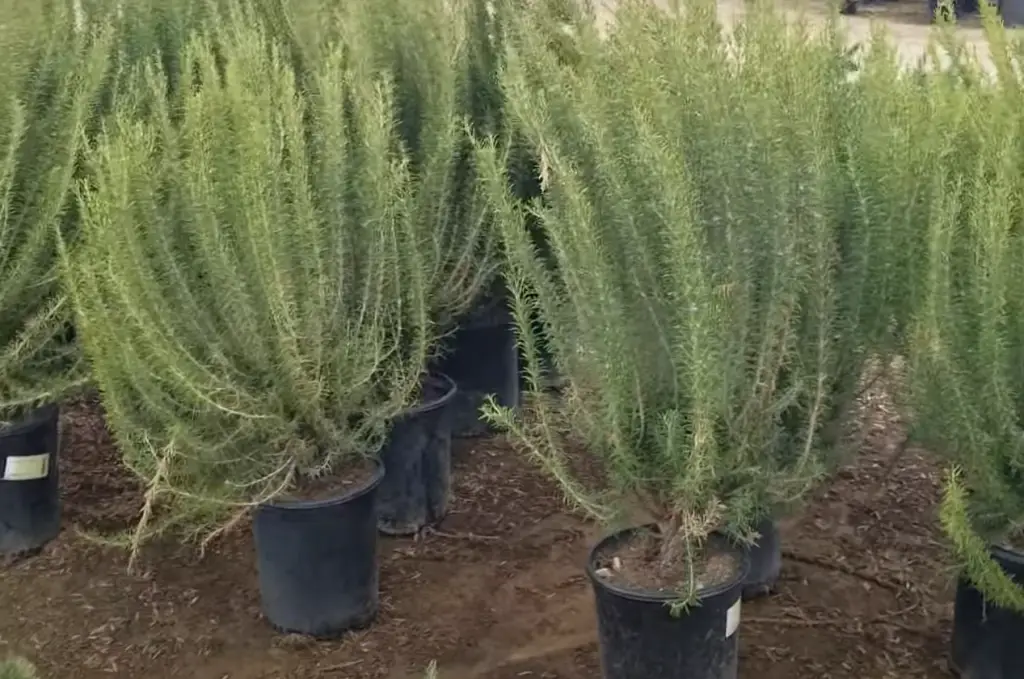
It can be used to add a colorful touch to a rock garden or as a border plant. Anthemis Cotula is particularly drought-tolerant and requires very little maintenance, making it an ideal choice for busy gardeners.
Artemisia Arborescens
Another one of the garden plants that look like rosemary is Artemisia Arborescens – also known as “Tree Wormwood” or “Silver Sage.” This is an evergreen shrub that grows in spreading clumps up to six feet tall and wide, with pointy gray-green leaves and clusters of tiny yellow flowers. It is also drought-tolerant, making it a great choice for dry climates. Artemisia Arborescens looks beautiful when planted in a mass or as an accent to your garden bed.
Lavandula Angustifolia
Last but not least, Lavandula Angustifolia – more commonly known as “English Lavender” – is one of the most popular garden plants that look like rosemary. This small evergreen shrub has fragrant gray-green leaves and long spikes of lavender flowers that appear in late spring or early summer. It is easy to grow, requiring only full sun and well-drained soil. Lavandula Angustifolia makes a great addition to any herb garden, as its fragrant foliage can be used in cooking and its pretty flowers can be dried for use in potpourri and other crafts.
Whether you’re looking for a show-stopping evergreen shrub or an easy-care herb to add flavor to your dishes, there are plenty of garden plants that look like rosemary to choose from.
Eupatorium Capillifolium
Also known as Dog Fennel, Eupatorium Capillifolium is a tall plant that looks like rosemary from afar. This perennial has fuzzy light green foliage and clusters of white flowers in the summer. It prefers full sun and well-drained soil but can tolerate some shade. Deadheading will help to encourage more blooms.
Chamaemelum Nobile
Also known as Roman chamomile, this is one of the most popular plants that look like rosemary. It’s a low-growing evergreen perennial with grayish-green leaves and white daisy-like flowers.
Additionally, Roman chamomile is an excellent choice for erosion control on slopes and banks.Dog Fennel
Dog Fennel, also known as Sweet Fennel or Wild Fennel, is one of the most popular varieties of garden plants that look like rosemary. This low-growing herb has delicate fronds and produces small yellow flowers in the summertime.
This herb is drought-tolerant and can be grown either indoors or outdoors.[1]Virginia Mountain Mint (Pycanthemum Virginianum)
Virginia mountain mint is a perennial herb native to the eastern United States and Canada. It has dark green leaves that are heavily scented when crushed, much like rosemary.
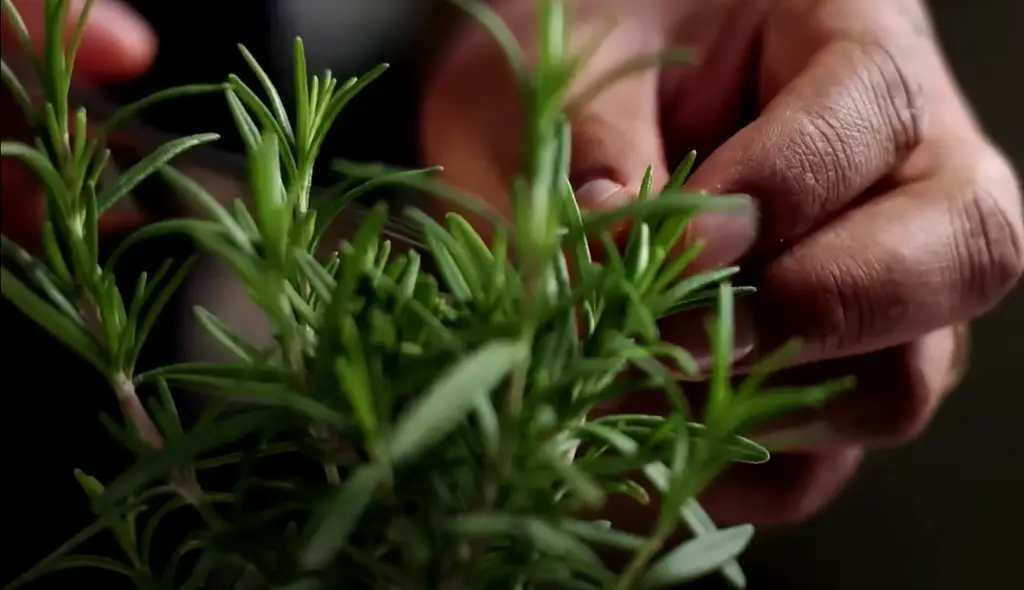
The plant blooms in late summer with small white flowers and can reach heights of up to four feet tall in ideal conditions. This versatile plant can be used as an ornamental or herb, and its strong scent can help to repel insects.[1]
Lavender Cotton (Santolina Chamaecyparissus)
Lavender cotton is a hardy, evergreen shrub that bears striking resemblance to rosemary. It has silver-green foliage and fragrant yellow flowers which attract bees and other pollinators. This plant is low maintenance and is suitable for both U.S. hardiness zones and Mediterranean climates, making it an ideal choice for those looking to add a touch of sophistication to their gardens.
Curry Plant (Helichrysum Italicum)
This variety of rosemary lookalike is a daisy-like herb that grows quite tall. It has a bright and strong aroma, making it ideal for adding flavor to dishes. The leaves on this plant are silver-green and the flowers range from yellow to pink. The curry plant blooms from mid to late summer, making it quite showy when in bloom. It’s a great choice for adding texture and color to your garden.
Rough False Pennyroyal
Rough false pennyroyal (Bunium persicum) is a perennial plant native to the Caucasus region. It has a strong resemblance to rosemary, with its slim leaves and small purple flower clusters. This herb grows in full sun and prefers well-drained soil. Its leaves are edible, but they have a bitter flavor that many people find unpleasant.[3]
Narrow Leaf Mountain Mint (Pycnanthemum Tenuifolium)
The narrow leaf mountain mint is a perennial herb that grows one to two feet tall, with ovate shaped leaves and tiny white flowers on slender stems. It has a pleasant, slightly peppery aroma that can be used in teas or as an ingredient in potpourris. This plant likes well-drained soil and full sun but will tolerate some shade.
Creeping Thyme (Thymus Serpyllum)
Creeping thyme is an evergreen perennial herb that is native to Europe but has been naturalized in North America. It grows 4-6 inches tall with small, pointed leaves and clusters of pink or purple flowers in summer. The leaves have a strong aroma that is often used to flavor vinegars and oils, as well as teas. This plant is low-maintenance and drought tolerant, however it prefers well-drained soil and full sun for optimal growth. It also spreads quickly so it’s important to keep an eye on it.[3]
Canadian Horseweed (Conyza Canadensis)
This is an annual plant that bears a strong resemblance to rosemary. It has small, linear leaves and produces masses of tiny white flowers from late summer into fall.
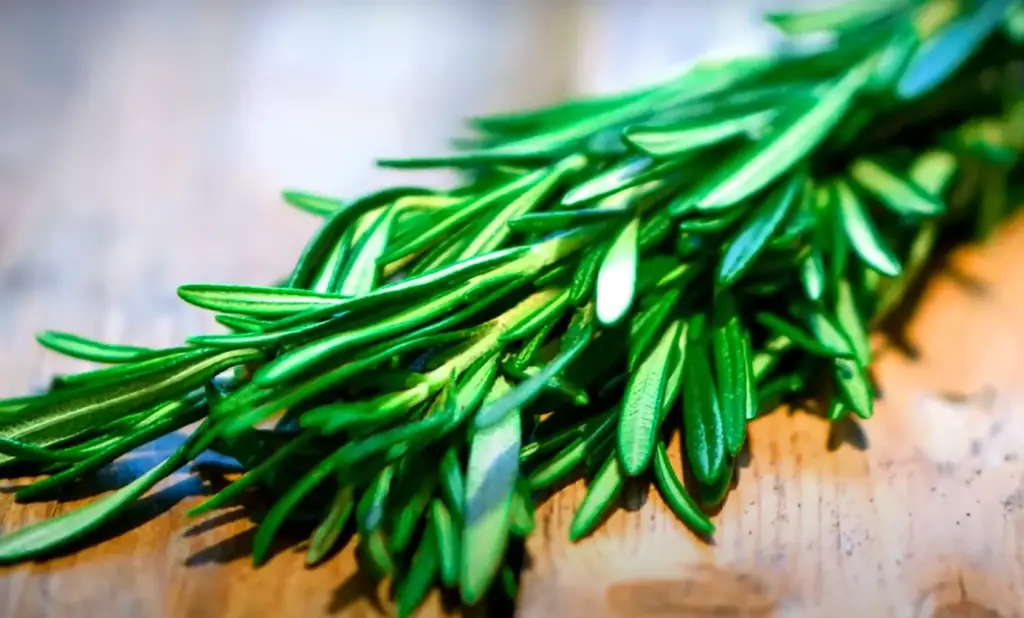
The stems are square in shape and the overall size can reach up to 3 feet tall. Canadian horseweed prefers full sun and well-drained soil with lots of organic matter. This plant attracts bees and butterflies, making it a great choice for pollinator gardens.
Sagebrush (Artemisia Tridentata)
Sagebrush, or Artemisia tridentata, is a variety of rosemary that has an unmistakable scent. It is commonly found in the western United States and can be grown both indoors and outdoors. This plant grows up to 3 feet tall and has small grey-green leaves with silver undersides. Sagebrush produces small yellow flowers in summer and can be used in a variety of ways, from flavoring dishes to providing a fragrant air.
Greek Oregano (Origanum Vulgare)
Greek oregano is another type of rosemary that’s commonly found in Mediterranean climates and throughout Europe. It has an intense flavor and aroma, making it popular for cooking. The leaves are oval-shaped and deep green in color, with white or purple flowers in late summer. Greek oregano is also an excellent choice for a drought-tolerant garden as it can survive long periods without water.[3]
Tarragon (Artemisia Dracunculus)
Tarragon is a variety of rosemary that has an unmistakable aroma and flavor. It’s native to Eurasia and is popular for both culinary and ornamental use. This variety of rosemary grows up to 3 feet tall with thin, light green leaves and bright yellow flowers in summer. Tarragon is a great choice if you want a plant that will add flavor to your dishes as well as a fragrant scent to your garden.[2]
American Pennyroyal (Hedeoma Pulegioides)
American Pennyroyal is a delicious herb that can be used in cooking. It’s also an attractive ornamental plant and has small purple flowers that bloom in the summer months. This perennial shrub grows up to two feet tall and prefers full sun and well-drained soil. Its leaves are similar to those of rosemary, but it’s much smaller. American Pennyroyal has a strong, minty aroma and can be used as a ground cover or in containers for adding interest to your garden.
Lavender (Lavender Angustifolia)
This fragrant member of the mint family is an excellent choice for garden plants that look like rosemary. Lavender has narrow, silvery green foliage and its flowers are usually shades of purple. It’s a low-maintenance plant and grows well in sunny areas that have good drainage. As an added bonus, it’s also drought tolerant once established. Lavender is great for herbal teas and potpourri, and its oils are used in aromatherapy.
Russian Sage (Perovskia Atriplicifolia)
Russian sage is a perennial shrub with lavender-blue flowers that bloom in late summer. This plant can reach heights of up to four feet and has gray-green foliage.
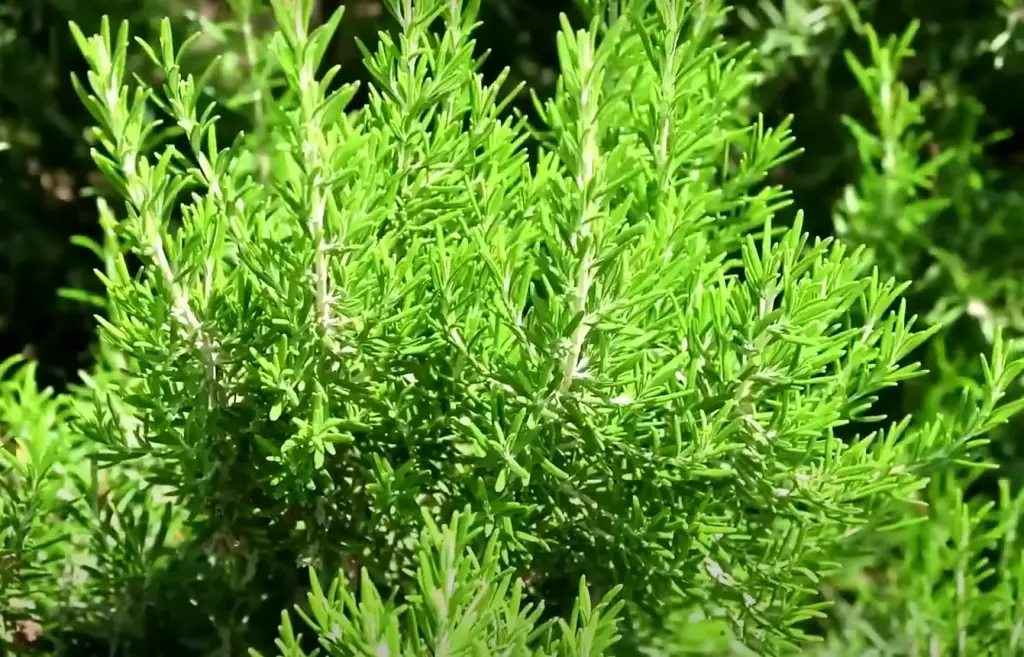
It is drought tolerant, making it an ideal choice for dry climates or areas that are prone to drought. Russian sage does best in full sun and should be planted in well-drained soil. This plant is an excellent choice for adding texture and color to your landscape.[2]
Corsican Mint (Mentha requienii)
Corsican mint is a low-growing herb with tiny, fragrant leaves in shades of green to silver. This plant can reach heights of about six inches and spreads up to two feet wide. It is a spreading evergreen, so it will provide your garden with year-round color and texture. Corsican mint has low water requirements and should be planted in full sun or partial shade.[2]
FAQ
What plant looks like rosemary but smells like mint?
The narrow leaf mountain mint (Pycnanthemum tenuifolium) looks like rosemary but smells like mint. It has a pleasant, slightly peppery aroma that can be used in teas or potpourris.
What mint looks like rosemary?
Creeping thyme (Thymus serpyllum) is an evergreen perennial herb that bears a strong resemblance to rosemary. It has small, pointed leaves and clusters of pink or purple flowers in summer. The leaves have a strong aroma that is often used to flavor vinegars and oils, as well as teas.
What plant looks like rosemary but smells like curry?
The Mexican oregano (Lippia graveolens) looks like rosemary but has a curry-like aroma. It is an evergreen shrub that produces small, white flowers in spring and fall. The leaves have a strong, spicy scent and are often used to flavor dishes such as stews and soups.
What has similar smell to rosemary?
Sagebrush (Artemisia tridentata) is a type of rosemary that has an unmistakable scent. It is commonly found in the western United States and can be grown both indoors and outdoors. This plant grows up to 3 feet tall and has small grey-green leaves with silver undersides. Sagebrush produces small yellow flowers in summer and can be used in a variety of ways, from flavoring dishes to providing a fragrant air.
What shrub smells like rosemary?
Tarragon (Artemisia dracunculus) is a variety of rosemary that has an unmistakable aroma and flavor. It’s native to Eurasia and is popular for both culinary and ornamental use. This variety of rosemary grows up to 3 feet tall with thin, light green leaves and bright yellow flowers in summer. Tarragon is a great choice if you want a plant that will add flavor to your dishes as well as a fragrant scent to your garden.
How do I make my house smell like rosemary?
The best way to make your house smell like rosemary is to use essential oils. Rosemary essential oil has a fresh, herbal scent that can be used in air fresheners, diffusers or even on its own. You can also grow plants such as sagebrush, tarragon or Greek oregano for an authentic rosemary aroma. Finally, you can add rosemary to your cooking for a delicious scent all around the house.
Does eucalyptus smell like rosemary?
Eucalyptus does not smell like rosemary. While both are evergreen plants, eucalyptus has a distinct medicinal scent that is slightly sweet and menthol-like.
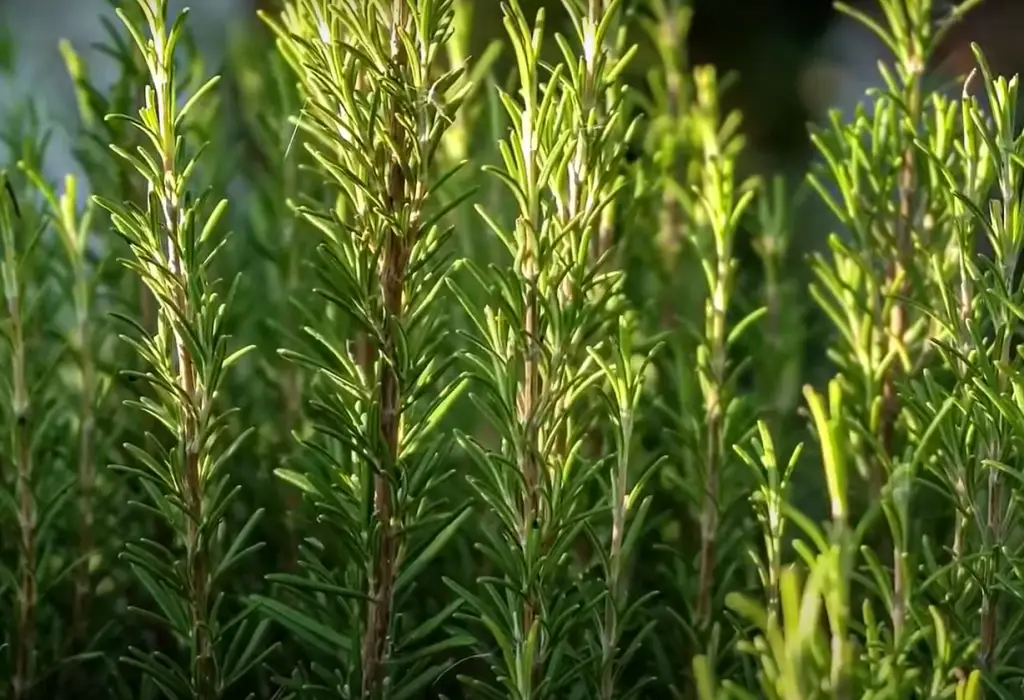
Rosemary, on the other hand, has an earthy aroma with notes of pine and lemon. Eucalyptus is often used to treat colds and congestion, while rosemary is often used to flavor dishes.
What is the purple flower that smells like rosemary?
The purple flower that smells like rosemary is American Pennyroyal (Hedeoma Pulegioides). It has small purple flowers that bloom in the summer months and is a great choice for adding fragrance to your garden. This perennial shrub grows up to two feet tall and prefers full sun and well-drained soil. Its leaves are similar to those of rosemary, but it’s much smaller. American Pennyroyal has a strong, minty aroma and can be used as a ground cover or in containers for adding interest to your garden.
Useful Video: 5 different types of Rosemary
Conclusion
Garden plants that look like rosemary are a great way to add texture and color to your landscape. From American Pennyroyal to Russian Sage, there are many varieties of herbs and shrubs that have similar foliage to the classic evergreen rosemary. These plants have strong scents that range from minty to curry-like, making them perfect for adding interest to your garden. Whether you are looking for a plant with savory culinary uses or one that provides a fragrant aroma, there is sure to be something in this list of plants that looks like rosemary and smells great too!
References:
- https://www.evergreenseeds.com/plants-that-look-like-rosemary/
- https://microveggy.com/what-plant-looks-like-rosemary/
- https://www.fallsgarden.com/plants-like-rosemary/





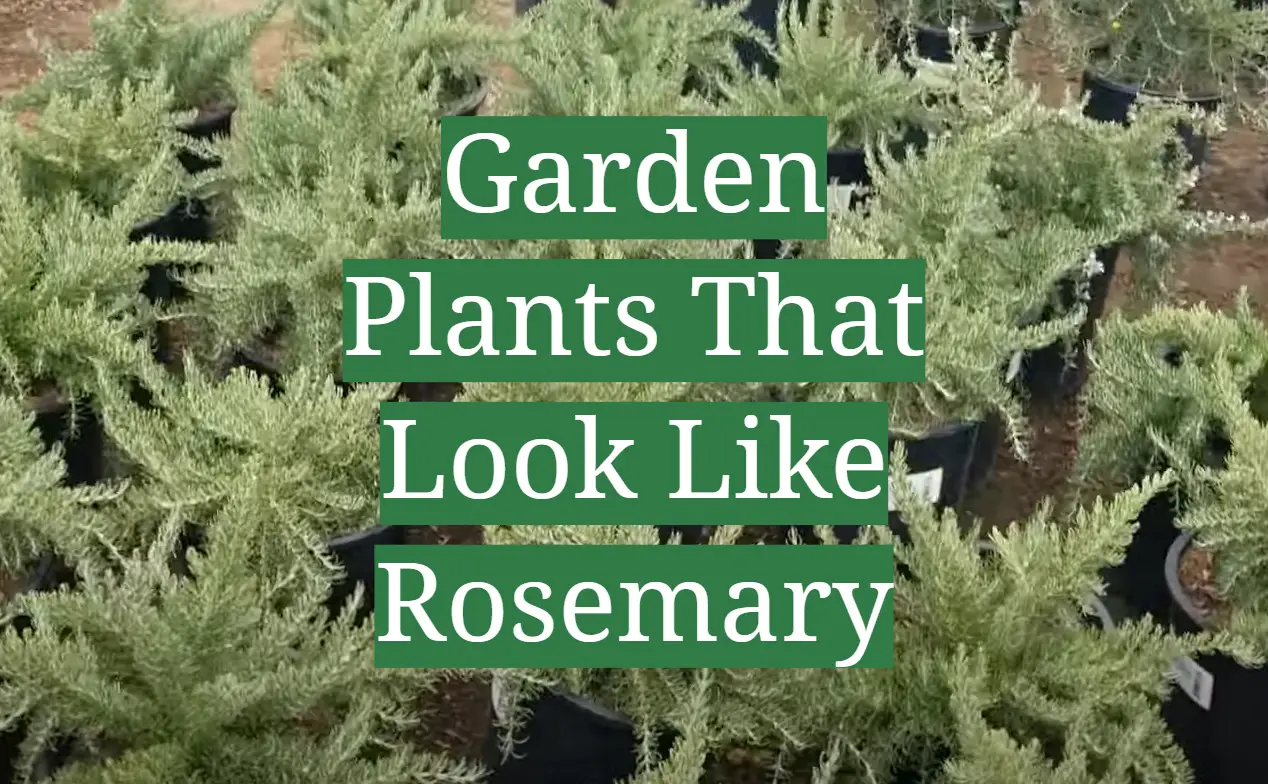




Leave a Reply
View Comments